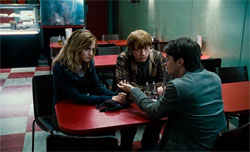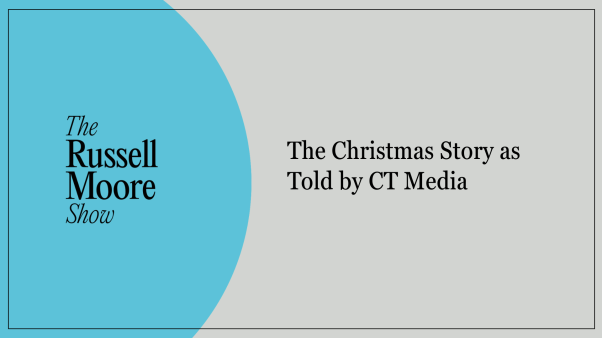I confess that I’m rather cynical when it comes to popular culture. When I read Paul’s words in Philippians 4:8 encouraging believers to focus on what is noble and excellent, not much popular television, music, or movies come to mind.
But having pre-teen daughters who are exposed to this popular culture, I thought it worth reconsidering the potential for excellence that could be lurking within the next bestseller or hit song. Since our family has been captivated by the world of Harry Potter, it’s a fitting place to start—especially since Harry Potter and the Deathly Hallows: Part 1 opens in theaters around the world this week.
 HP7A-TR2-135
Alan Rickman as Professor Severus Snape in Warner Bros. Pictures’ fantasy adventure “HARRY POTTER AND THE DEATHLY HALLOWS – PART 1,” a Warner Bros. Pictures release.
Photo courtesy of Warner Bros. Pictures
HP7A-TR2-135
Alan Rickman as Professor Severus Snape in Warner Bros. Pictures’ fantasy adventure “HARRY POTTER AND THE DEATHLY HALLOWS – PART 1,” a Warner Bros. Pictures release.
Photo courtesy of Warner Bros. PicturesShortly after the release of the fifth Harry Potter movie, my daughters and I were at our veterinarian’s for the annual check-up of our dog, whose name happens to be Harry. As the vet examined Harry, she brought up the subject of Harry Potter. She pointedly asked if we thought Severus Snape was good or bad. Her question launched us into a passionate discussion about the trustworthiness of Professor Snape.
My daughters were active participants in this dialogue, sharing insights about what made Snape righteous or corrupt. That interchange is one example of the true value of Harry Potter. The topic opened the door for the vet, my daughters, and me to have a natural, intergenerational, and thought-provoking discussion about the nature of good and evil, and how one makes honorable choices in the midst of competing interests.
The community of the church has language and symbols that facilitate identity formation, and the world outside the church has its own tools that shape identity and moral conscience. It seems to me that Harry Potter provides communities inside and outside the church with points of contact, a shared body of tools that can form us.
J.K. Rowling’s books—and the subsequent films—put important elements of the Christian story into a moral language that both communities speak and that our contemporary culture can understand and engage. Whether Rowling intended it or not, the Harry Potter phenomenon is an example of how the Holy Spirit uses cultural means to tell God’s story.
We see it in Paul’s speech to the Athenians in Acts 17 where he recognized and even affirmed elements of wider culture, identifying shared values between Christianity and a Greek worldview. Paul reminds us to listen to culture for those stories that resonate with God’s story of love and redemption. This doesn’t entail that Christians embrace all of popular culture (or even all of Harry Potter), but it does mean that we are attentive to the world around us, aware of the ways the Spirit is moving.
 HP7-1-FP-0203
(L-r) EMMA WATSON as Hermione Granger, RUPERT GRINT as Ron Weasley and DANIEL RADCLIFFE as Harry Potter in Warner Bros. Pictures’ fantasy adventure “HARRY POTTER AND THE DEATHLY HALLOWS – PART 1,” a Warner Bros. Pictures release.
Photo courtesy of Warner Bros. Pictures
HP7-1-FP-0203
(L-r) EMMA WATSON as Hermione Granger, RUPERT GRINT as Ron Weasley and DANIEL RADCLIFFE as Harry Potter in Warner Bros. Pictures’ fantasy adventure “HARRY POTTER AND THE DEATHLY HALLOWS – PART 1,” a Warner Bros. Pictures release.
Photo courtesy of Warner Bros. PicturesMy daughters have posters of Harry, Ron, and Hermione on their bedroom walls which I am happy for them to look at each day. These images direct their gaze toward what is true, good, and beautiful—loyalty, courage, and friends who are willing to lay down their lives for what is right. May they think about such things and see them as pointing to the God who loves them perfectly.
Linda Peacore is adjunct assistant professor of theology at the School of Theology, Fuller Theological Seminary. She has been an HP fan since the first book, Harry Potter and the Sorcerer’s Stone, released in late 1998.
Copyright © 2010 Christianity Today. Click for reprint information.










